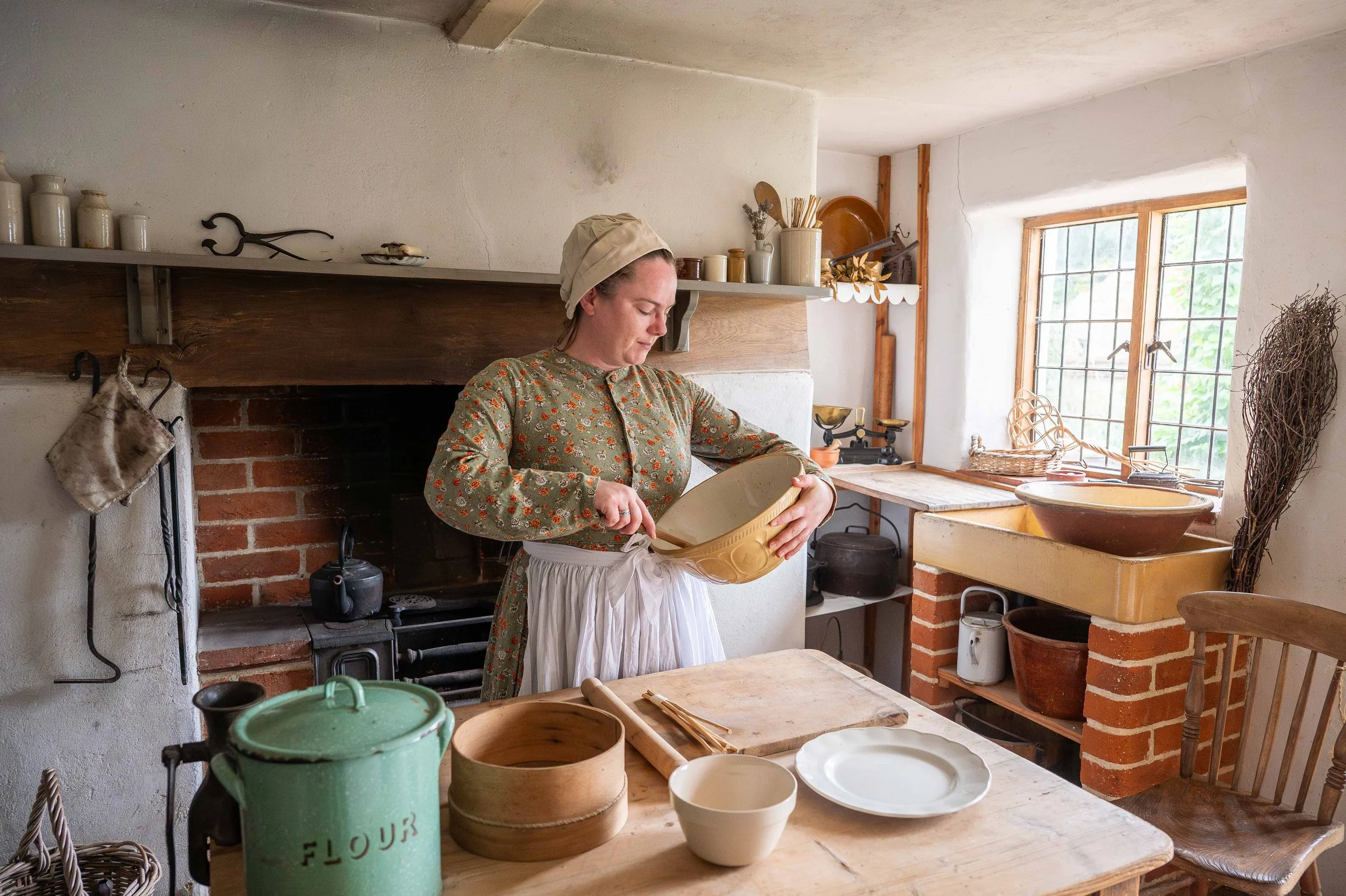Women’s History Month: Women’s Work
Written by Museum Volunteer Roger Coode.
It is often presumed that women in the past had little influence in daily life and yet when Henry VIII went to war in France his wives at the time became regent. For many years, women were not allowed into the professions and yet they performed a key role in the running of a household and a family. Their craft skills often provided much needed income for the family and women also worked alongside their husbands in small family businesses.
Women’s Work in the 16th Century
In 1555 Sir Anthony Fitzherbert wrote a “Boke of Husbandrie” and included a chapter on “wyves occupacyon”. At this early date the spelling of English had not been regularised and so deciphering Sir Anthony’s meaning can occasionally be problematic and so here the spelling has been modernised. Although what he writes may seem very prescriptive, he prefaces his comments with the following:
“For there is an old common saying, that seldom doth the husband thrive without leave of his wife. By this saying it should seem that there be other occupations and labours that be most convenient for the wives to do, and how be it that I have not the experience of all their occupations and works as I have of husbandry, yet a little will I speak what they ought to do though I tell them not how they should do and exercise their labour and occupations.”
He then spends three pages listing all the things that a wife should be doing. In the morning, for example, she should:
“first sweep thy house; dress up thy dishboard, and set all things in good order within thy house, milk the cows, suckle thy calves, take up thy children and array them, and provide for thy husbands breakfast, dinner, supper, and for thy children and servants, and take thy part with them. And to ordain corn and malt to the mill, to bake and brew withal when need is. And mete it to the mill and from the mill, and see that thou have thy measure again besides the toll or else the miller dealeth not truly with thee, or else thy corn is not dry as it should be…”. It should be noted that here we have a description of tasks on a relatively prosperous farm where servants and labourers would be available to help since they are mentioned elsewhere by Sir Anthony.
And so it continues for pages dealing with the fowls and animals, how to deal with the flax harvest, the drying of linseed and also pointing out that the wife should in any spare moments “let thy distaff be always ready for a pastime, that thou be not idle”! It was also the wife’s duty to winnow the corn “and in time of need to help her husband to fill the muck wain or dung cart, drive the plough, to load the hay, corn and such other”. Moreover she would have go to market to buy and sell and show her husband her accounts for the day. It is encouraging to read that Sir Anthony points out that if the husband goes to market to do the same then he should show his accounts to his wife.
The Importance of Women in Cottage Industries
Cottage industries across the Chilterns relied on the skills of women. Spinning and lacemaking were traditionally women’s work. Women also worked alongside their husbands in running family businesses such as blacksmiths or cobblers.
During the winter, the straw plaiting ladies of Leagrave Cottages would have earned more money than their husbands. The lack of work in the fields during the cold months meant many families needed the women’s wages to survive. The men would often help with the plaiting when they couldn’t get work in the fields.
In the past, women may not have had the same roles or standing in society as men. But their skills were vital in the running of both the household and many small businesses.


